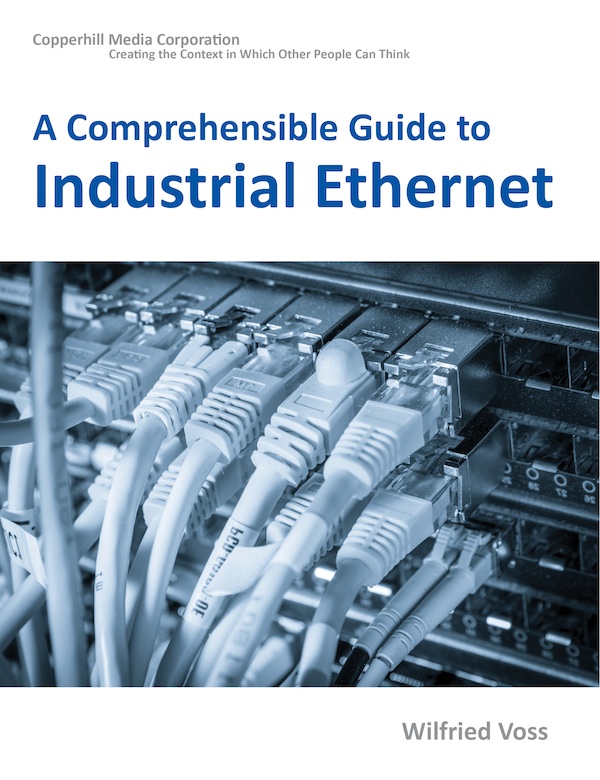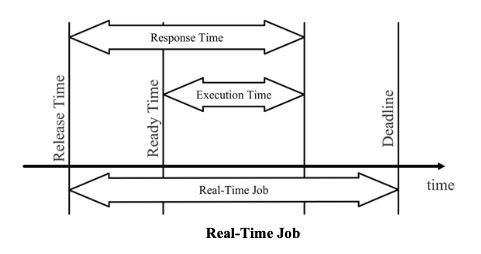Blog
Recent Posts
Industrial Ethernet Guide - “Hard” and “Soft” Real-Time Control
Posted by on

The following is part of A Comprehensible Guide to Industrial Ethernet by Wilfried Voss.
“Hard” real-time (HRT) control systems are designed to support specific response times, and thus, they are highly deterministic, but they depend on stable cycle time. A missed deadline may post a safety hazard or other serious consequences.
“Soft” real-time (SRT) systems deliver a best-effort response, and there is only a preferred cycle time. In all consequence, late responses are tolerated, and errors in an SRT system, while not encouraged, are not as safety-critical as in HRT systems.
All real-time systems have a certain level of timing variance, called jitter. Jitter should be measurable to guarantee system performance.
The building blocks of a real-time system are so-called jobs, and each job is composed of certain sequential items:
- Release Time – The time when the job becomes available to the system
- Execution Time – The time to process the job.
- Response Time – The time between start of release and end of execution.
- Ready Time – The earliest time that execution can start.
- Deadline – The time at which execution must be finished.

Currently, there is no standard that would explicitly define the boundary between soft and hard real-time control through a set of firm parameters and values. A definition of, for instance, the level of determinism and cycle time is difficult because even a non-real-time system needs to respond within a certain amount of time.
There are, however, a few recommendations used in the industry to determine the need for a hard real-time system:
- Cycle Time: A cycle time of less than 10 milliseconds.
- Cycle Time Jitter: A jitter (cycle time variation) of 10 percent (or better) of the cycle time.
And yet again, speed is not as important as precision. The cycle time is of minor importance as long as it is constant.
The following lists some typical cycle times for various control applications:
- Low speed sensors (e.g. temperature, pressure) – Tens of milliseconds
- Drive control systems – Milliseconds
- Motion control (e.g. robotics) – Hundreds of microseconds
- Precision motion control – Tens of microseconds
- High-speed devices - Microseconds
Like any closed-box real-time systems, real-time communication networks can be hard or soft, depending on their requirements and abilities, and Ethernet offers many benefits (most prominently: speed) over other serial systems in regards to real-time control.
Note: In 2002 the IEEE 1588 Precision Time Protocol Standard addressed the need for deterministic responses by introducing a precision clock synchronization protocol for networked measurement and control systems, which has been adopted by some (but not all) Industrial Ethernet protocols.
TCP/IP Illustrated, Volume 1: The Protocols
TCP/IP Illustrated, Volume 1, Second Edition, is a detailed and visual guide to today’s TCP/IP protocol suite. Fully updated for the newest innovations, it demonstrates each protocol in action through realistic examples from modern Linux, Windows, and Mac OS environments. There’s no better way to discover why TCP/IP works as it does, how it reacts to standard conditions, and how to apply it in your applications and networks.
Building on the late W. Richard Stevens’ classic first edition, author Kevin R. Fall adds his cutting-edge experience as a leader in TCP/IP protocol research, updating the book to reflect the latest protocols and best practices fully. He first introduces TCP/IP’s core goals and architectural concepts, showing how they can robustly connect diverse networks and support multiple services running concurrently. Next, he carefully explains Internet addressing in both IPv4 and IPv6 networks. Then, he walks through TCP/IP’s structure and function from the bottom up: from link layer protocols–such as Ethernet and Wi-Fi–through the network, transport, and application layers.
Industrial Ethernet Guide - Real-Time Works Only In A Box
The following is part of A Comprehensible Guide to Industrial Ethernet by Wilfried Voss.Ages-old technology wisdom says that real-time works only in a box. This statement has, however, been obsoleted by Industrial Ethernet. Industrial Ethernet allows the design of a real-time network rather than an isolated real-time system.Note: The reference to real-time capabilities of Industrial Ethernet [...]
 Loading... Please wait...
Loading... Please wait...

